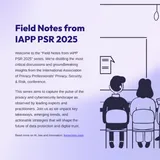California's DROP system: One button to rule them all
Are you building privacy controls that work at the scale California is designing for? Because "we'll handle deletion requests manually" doesn't survive a system designed to generate them by the millions.





